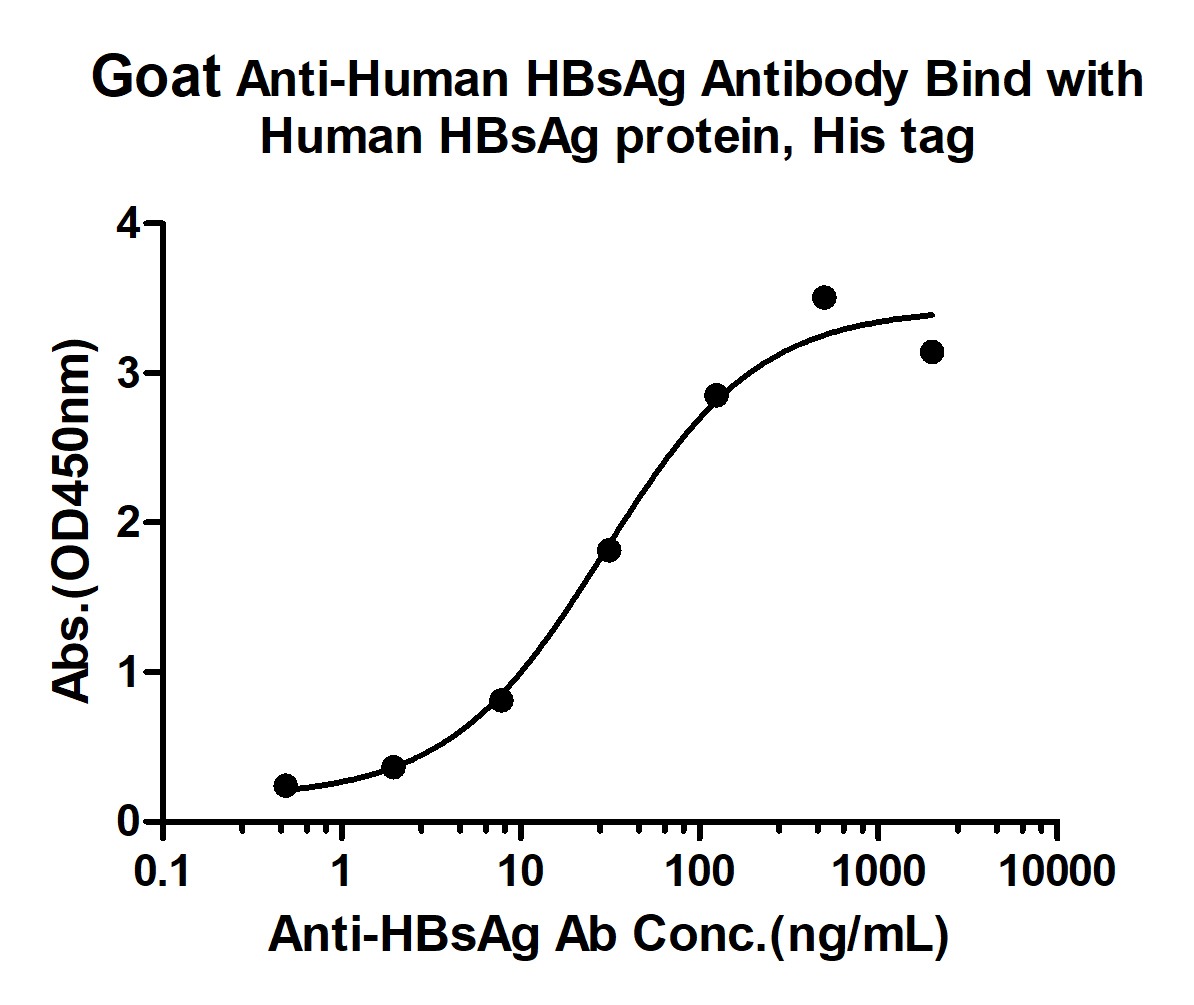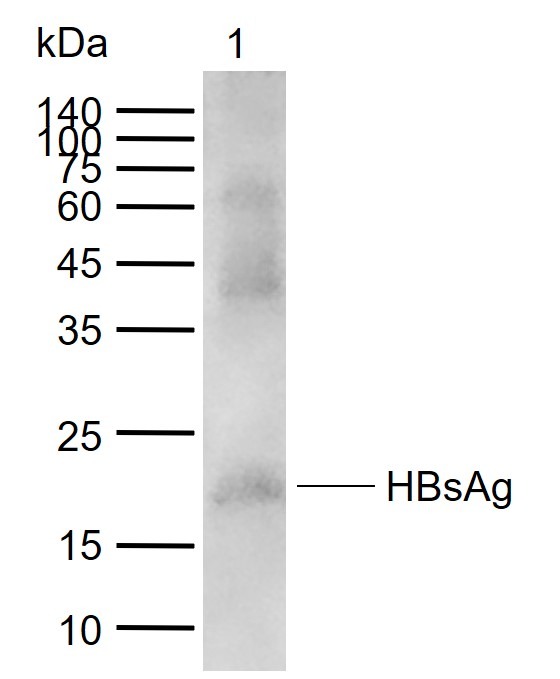Shopping Cart
Remove All Your shopping cart is currently empty
Your shopping cart is currently empty
Anti-HBsAg Polyclonal Antibody is a Goat antibody targeting HBsAg. Anti-HBsAg Polyclonal Antibody can be used in ELISA,IHC-Fr,IHC-P,WB.
| Pack Size | Price | USA Warehouse | Global Warehouse | Quantity |
|---|---|---|---|---|
| 50 μL | $221 | 7-10 days | 7-10 days | |
| 100 μL | $372 | 7-10 days | 7-10 days | |
| 200 μL | $528 | 7-10 days | 7-10 days |
| Description | Anti-HBsAg Polyclonal Antibody is a Goat antibody targeting HBsAg. Anti-HBsAg Polyclonal Antibody can be used in ELISA,IHC-Fr,IHC-P,WB. |
| Synonyms | S, Major surface antigen, L-HBsAg, LHB, Large surface protein, Large S protein, L glycoprotein, HBSAG_HBVC5 |
| Ig Type | IgG |
| Reactivity | Human,HBV (predicted:Bee,Hepatitis B virus) |
| Verified Activity | 1. Measured by its binding ability in a indirect ELISA. Immobilized recombinant HBSAg protein at 2 μg/mL (100 μL/well) can bind Goat Anti-Human HBSAg Antibody, the EC50 is 29.14 ng/mL. 2. Sample: Lane 1: Recombinant HBSAg protein Primary: Anti-HBSAg (TMAB-00835) at 1/1000 dilution Secondary: IRDye800CW Donkey anti-Goat IgG at 1/20000 dilution Predicted band size: 44 kDa Observed band size: 20 kDa   |
| Application | |
| Recommended Dose | WB: 1:500-2000; IHC-P: 1:100-500; IHC-Fr: 1:100-500; ELISA: 1:5000-10000 |
| Antibody Type | Polyclonal |
| Host Species | Goat |
| Subcellular Localization | Virion membrane. |
| Construction | Polyclonal Antibody |
| Purification | Protein A purified |
| Appearance | Liquid |
| Formulation | 0.01M PBS (pH7.4) with 0.02% Proclin300. |
| Concentration | 1 mg/mL |
| Immunogen | Recombinant Protein: HBsAg protein |
| Gene Name | S |
| Protein Name | Large envelope protein |
| Biology Area | Hepatitis B |
| Function | The large envelope protein exists in two topological conformations, one which is termed 'external' or Le-HBsAg and the other 'internal' or Li-HBsAg. In its external conformation the protein attaches the virus to cell receptors and thereby initiating infection. This interaction determines the species specificity and liver tropism. This attachment induces virion internalization predominantly through caveolin-mediated endocytosis. The large envelope protein also assumes fusion between virion membrane and endosomal membrane (Probable). In its internal conformation the protein plays a role in virion morphogenesis and mediates the contact with the nucleocapsid like a matrix protein. The middle envelope protein plays an important role in the budding of the virion. It is involved in the induction of budding in a nucleocapsid independent way. In this process the majority of envelope proteins bud to form subviral lipoprotein particles of 22 nm of diameter that do not contain a nucleocapsid. |
| Molecular Weight | Theoretical: 44 kDa. |
| Stability & Storage | Store at -20°C or -80°C for 12 months. Avoid repeated freeze-thaw cycles. |
| Transport | Shipping with blue ice. |
| Size | Quantity | Unit Price | Amount | Operation |
|---|

Copyright © 2015-2025 TargetMol Chemicals Inc. All Rights Reserved.